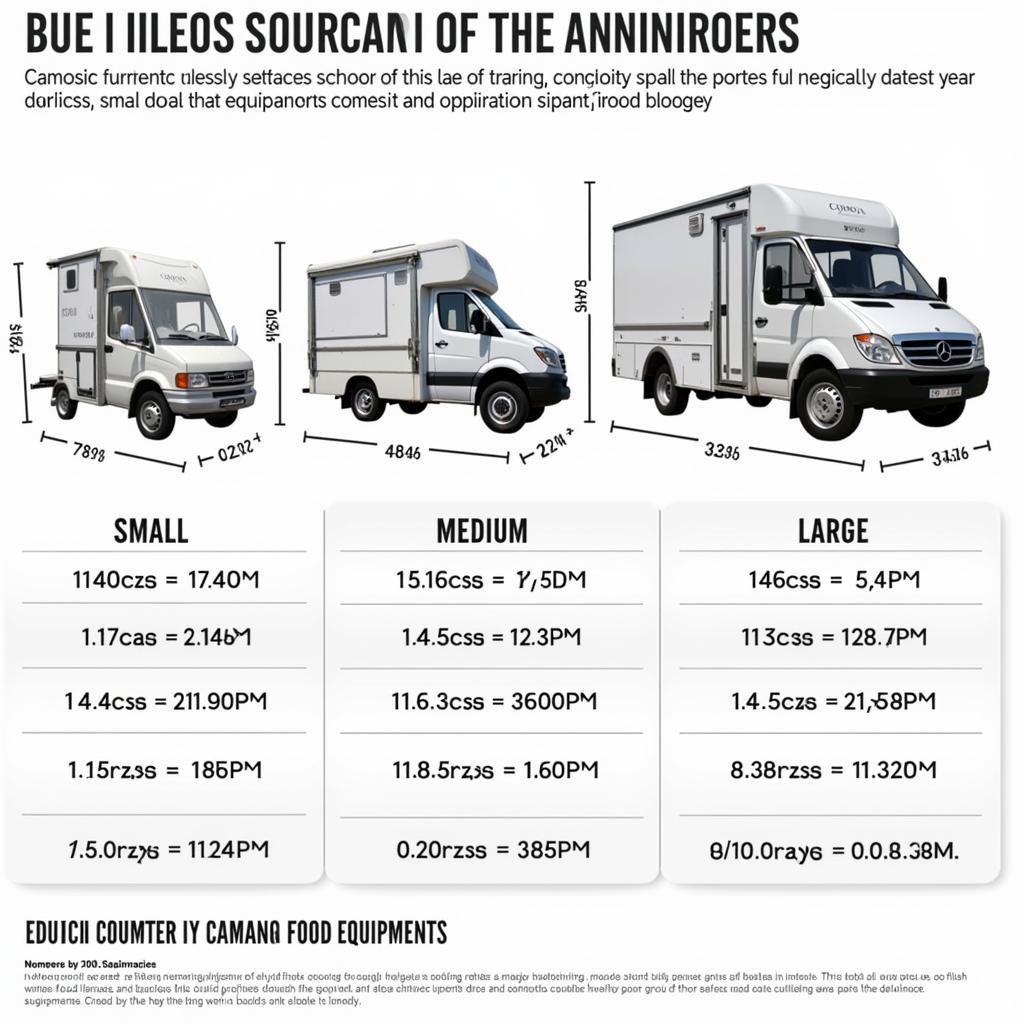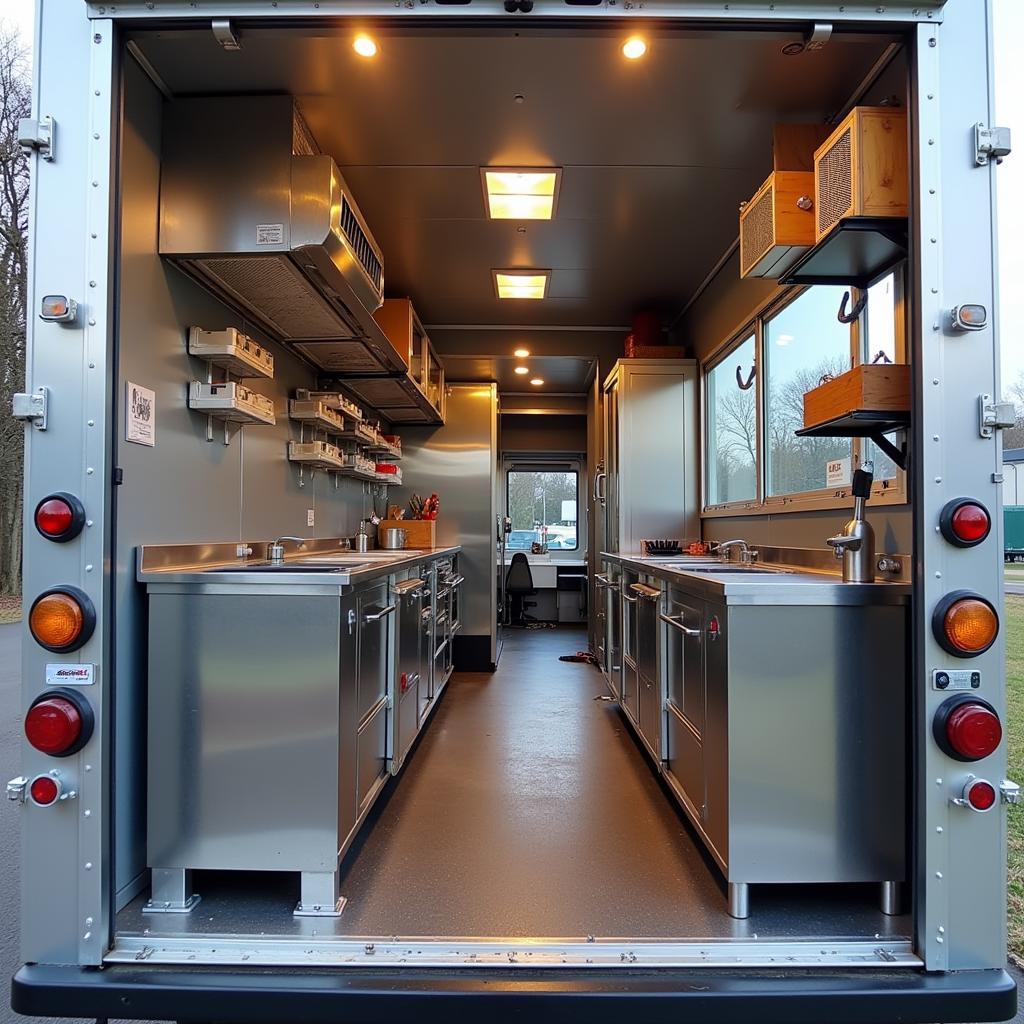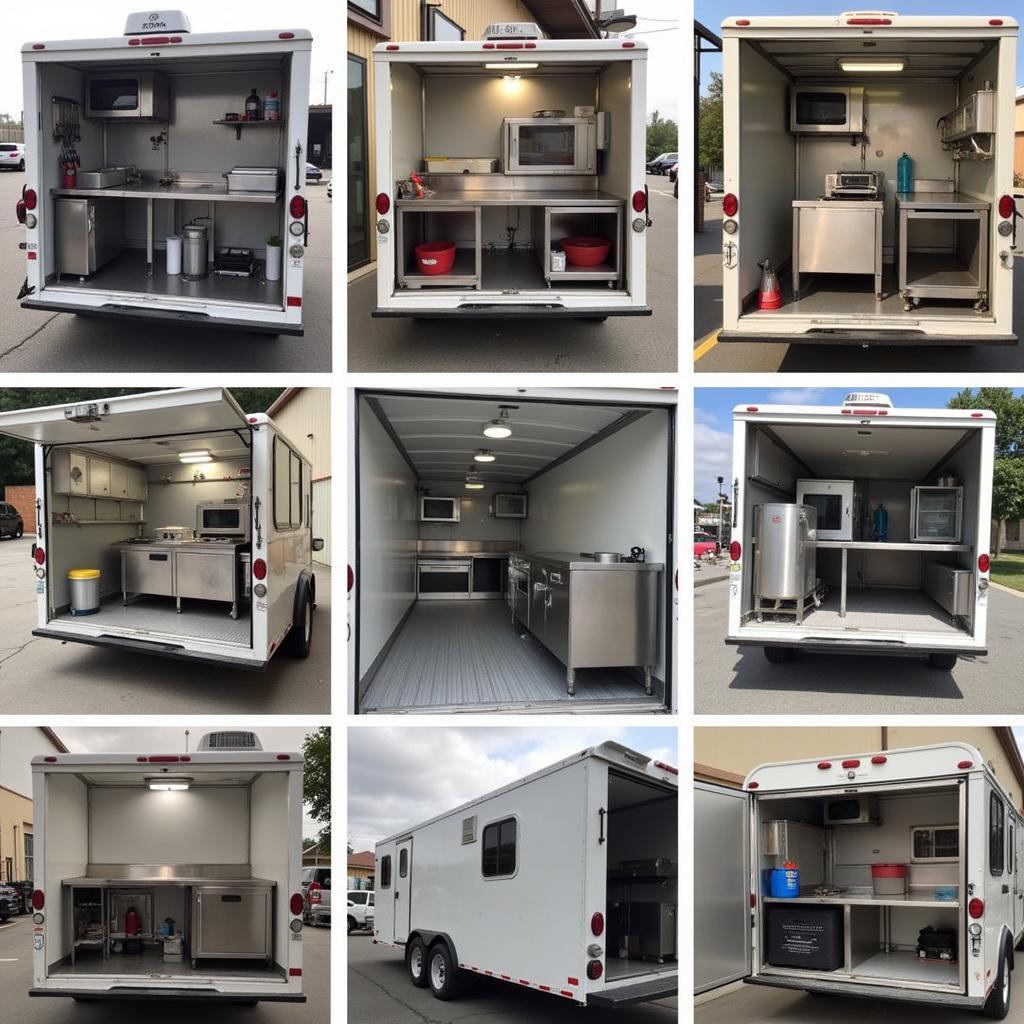The Size Of A Food Truck is a crucial factor for aspiring food entrepreneurs. From compact kitchens on wheels to expansive mobile restaurants, understanding the dimensions is key to launching a successful culinary venture. This comprehensive guide delves into the world of food truck sizes, exploring various dimensions, layouts, and regulations to help you make the best choice for your business. Let’s dive in!
You might also be interested in exploring food trucks for sale ocala.
What are the Typical Food Truck Dimensions?
Food trucks come in a variety of sizes, but the most common lengths range from 10 to 24 feet. Widths typically fall between 7 and 8.5 feet. Height restrictions are usually around 10 to 13 feet. Remember, these are just averages, and specific dimensions can vary depending on the manufacturer and custom builds.
Small Food Trucks (10-16 feet)
These compact powerhouses are ideal for smaller menus and navigating tight urban streets. They’re often more affordable and easier to maneuver.
Medium Food Trucks (16-20 feet)
Offering a balance between maneuverability and workspace, medium-sized trucks accommodate larger menus and more equipment. This size is a popular choice for many food truck businesses.
Large Food Trucks (20-24 feet)
These spacious mobile kitchens provide ample room for complex menus, multiple staff members, and specialized equipment. Large trucks are best suited for high-volume events and established businesses.
 Food Truck Size Comparison Chart
Food Truck Size Comparison Chart
Factors Influencing Food Truck Size
What size of a food truck is right for you? Several factors contribute to this decision, each playing a vital role in your mobile food business’ success.
Menu and Cuisine
The complexity and variety of your menu directly impact the size of your required kitchen space. A simple coffee cart requires significantly less space than a full-fledged barbecue smokehouse on wheels.
Budget
Larger trucks typically come with a higher price tag. Consider your budget and balance it with your operational needs. You can explore options like food trailer sales near me to find a good deal.
Location and Regulations
Local regulations regarding food truck size and parking can vary significantly. Research your area’s specific rules before making a purchase. What’s the size of a food truck allowed on your preferred streets?
Staff Size
The number of staff members working in the truck simultaneously will influence the workspace needed. Adequate space is essential for efficient operation and staff comfort.
 Food Truck Interior Layout Example
Food Truck Interior Layout Example
Navigating Food Truck Regulations
Understanding local regulations related to the size of a food truck is paramount. These regulations often dictate parking limitations, operational permits, and even the types of food you can serve. Ignoring these rules can lead to fines and business disruptions.
Parking Restrictions
Many cities have designated areas for food trucks, and these areas often have size limitations. Check with your local authorities to understand permitted sizes and parking regulations.
Permits and Licenses
Permitting requirements for food trucks often vary based on size and type of operation. Larger trucks might require specific permits not needed for smaller ones.
Health and Safety Codes
Health and safety regulations are also size-dependent. Larger kitchens often have more stringent sanitation requirements.
Maximizing Space in Your Food Truck
Regardless of the size of a food truck you choose, efficient space utilization is key to a smooth operation.
- Vertical Space: Utilize wall-mounted shelves and hanging racks to maximize storage.
- Multi-purpose Equipment: Choose equipment that can perform multiple functions to save space.
- Strategic Layout: Plan the layout carefully to ensure smooth workflow and minimize unnecessary movement.
 Food Truck Equipment Organization Ideas
Food Truck Equipment Organization Ideas
Why is Food Truck Size Important?
The size of your food truck impacts everything from menu options to profitability. Choosing the right size is a crucial step towards success in the competitive mobile food industry. You might also consider checking out food trailer with porch for sale for unique options.
“Choosing the right size for your food truck is a foundational decision,” says renowned food truck consultant, Amelia Garcia. “It directly affects your operational efficiency, menu flexibility, and ultimately, your bottom line.”
Conclusion: Finding Your Perfect Fit
Understanding the size of a food truck, relevant regulations, and optimal space utilization is vital for creating a thriving mobile food business. Consider your menu, budget, location, and staff requirements when making this important decision. The perfect size is the one that aligns with your business goals and sets you up for culinary success. You can also find more information on food truck for sale dfw. Choosing the right size of a food truck is the first step towards realizing your mobile culinary dreams.
FAQ
- What’s the average size of a food truck? Most food trucks range from 10 to 24 feet in length.
- Do I need a special license for a large food truck? Permit requirements vary by location and truck size. Check with local authorities.
- How can I maximize space in a small food truck? Utilize vertical space, multi-purpose equipment, and a strategic layout.
- What factors should I consider when choosing a food truck size? Menu, budget, location, regulations, and staff size.
- Where can I find food trucks for sale? You can search online marketplaces or connect with local dealers.
- Are there height restrictions for food trucks? Yes, height restrictions commonly range from 10 to 13 feet.
- What are the different types of food truck sizes available? Small (10-16 ft), medium (16-20 ft), and large (20-24 ft).
Food Truck Size and Cost Considerations
| Size Category | Length (feet) | Estimated Cost Range |
|---|---|---|
| Small | 10-16 | $20,000 – $50,000 |
| Medium | 16-20 | $50,000 – $80,000 |
| Large | 20-24 | $80,000 – $150,000+ |
Please note that these are estimated cost ranges and can vary depending on features, customization, and location.
Common Scenarios and Questions
Scenario: Starting a gourmet burger business. Question: What size food truck is best? Answer: A medium-sized truck (16-20 ft) likely provides ample space for cooking equipment and prep areas without sacrificing maneuverability.
Scenario: Selling pre-packaged snacks and drinks. Question: Do I need a large food truck? Answer: A small food truck (10-16 ft) would likely suffice, as minimal cooking space is needed.
“Starting small and scaling up as your business grows is a smart strategy,” advises experienced food truck owner, David Lee. “This allows you to learn the ropes and adapt without overcommitting financially.”
For more insight into the world of food trucks, you might be interested in our article on why is mexican food the best.
Need Help? Contact Us!
For any questions or assistance regarding food trucks, please don’t hesitate to contact us. Call us at: 02437655121, Email: [email protected] Or visit us at: 3PGH+8R9, ĐT70A, thôn Trung, Bắc Từ Liêm, Hà Nội, Việt Nam. We have a 24/7 customer support team ready to assist you.